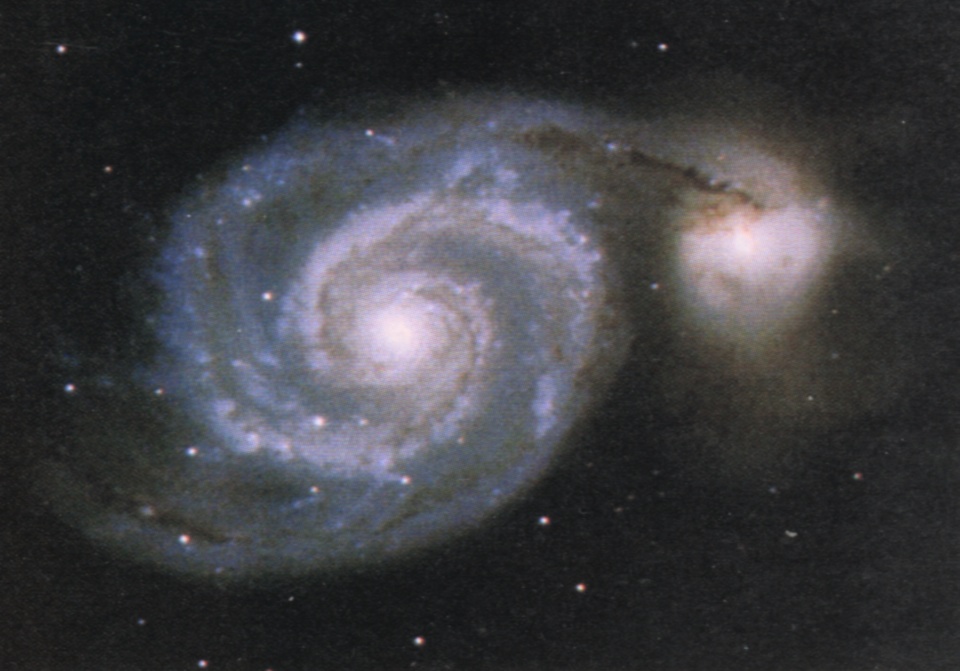| 1 |
Astronomers
often state the distance to a remote galaxy in terms of its distance modulus,
which is the difference between the apparent magnitude m and the absolute
magnitude M.
(a) By measuring the brightness of supernova 1994I in the galaxy M51 (see
 ),
the distance modulus for this galaxy was determined to
be m-M=29.2. Find the distance to M51 in megaparsecs (Mpc). ),
the distance modulus for this galaxy was determined to
be m-M=29.2. Find the distance to M51 in megaparsecs (Mpc).
(b) A separate distance determination, which involved measuring the brightness
of planetary nebulae in M51, found m-M=29.6. What is the distance to M51
that you calculate from this information?
(c) What is the difference between your answers to parts (a) and (b)? Compare
this difference with the 750-kpc distance from the Earth to M31, the Andromeda
Galaxy. The difference between your answers illustrates the uncertainties
involved in determining the distances to galaxy! |
| 2 |
Suppose you
discover a Type Ia supernova in a distant galaxy. At maximum brilliance,
the supernova reaches an apparent magnitude of +10. How far away is the
galaxy? |
| 3 |
The
average radial velocity of galaxies in the Hercules cluster pictured in
 is 10800 km/s.
Using H0=70 km/s/Mpc, find the distance to this cluster.
Give your answer in megaparsecs and in light-years. is 10800 km/s.
Using H0=70 km/s/Mpc, find the distance to this cluster.
Give your answer in megaparsecs and in light-years. |
| 4 |
A certain
galaxy is observed to be receding from the Sun at a rate of 7500 km/s. The
distance to this galaxy is measured independently and found to be 1.4x108
pc. From these data, what is the value of the Hubble constant? |
| 5 |
Two galaxies
separated by 600 kpc are orbiting each other with a period of 40 billion
years. What is the total mass of the two galaxies? |